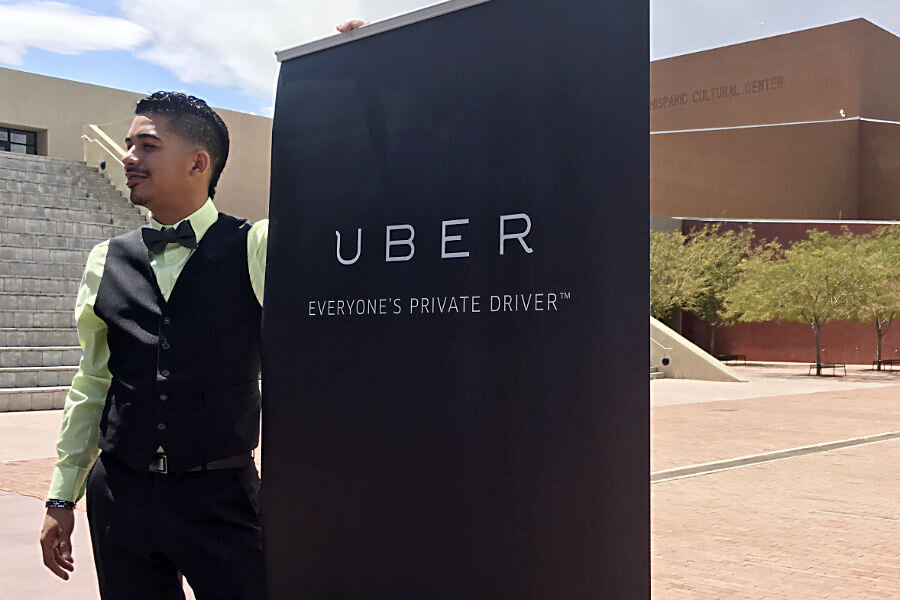Clash of ride-hailing titans: Why Alphabet exec left Uber's board
Loading...
In 2013, David Drummond, an executive at Google parent company, Alphabet, helped oversee a $250 million investment in Uber – at the time a rapidly growing Silicon Valley-based ride-hailing company.
On Monday, Uber Technologies announced that Mr. Drummond decided to leave their board over a conflict of interest as the two companies clash over the future of transportation and logistics.
This departure follows a report by tech news site, The Information, which cites anonymous sources saying that Uber had recently barred Mr. Drummond from attending board meetings and was limiting the information shared with David Krane — the head of Alphabet’s venture capital arm, GV.
“I recently stepped down from Uber’s board given the overlap between the two companies,” said Mr. Drummond in a statement to the Wall Street Journal. “GV remains an enthusiastic investor and Google will continue to partner with Uber.”
The overlap in question has to do with the fierce competition between the two companies in developing self-driving cars.
Google, who has been working on their autonomous driving program since 2009, announced in May that it would be working with Fiat Chrysler Automobiles to create self-driving minivans, doubling its fleet of autonomous vehicles on the road by the end of 2016; a move that led to speculation that Google was looking to enter the competitive ride-hailing industry.
Meanwhile Uber recently announced it is launching free public trials of their new autonomous vehicles. Uber’s self-driving program, which began near the end of 2014, initially consisted of Uber co-founder and CEO Travis Kalanick traveling to Pittsburgh with the goal of recruiting top scientists from the renowned robotics program at Carnegie Mellon University – the very department where the creator of Google’s self-driving car program, Sebastian Thrun, had worked as a professor.
Now Uber will utilize Pittsburgh, the home of the CMU, to debut its new fleet of self-driving Volvo XC90s, which users will be able to summon using the Uber app on their smartphones. While initially the vehicles will be monitored by humans in the drivers seat, Uber and Volvo entered an agreement earlier this year to have an entirely autonomous car by 2021.
While Google, whose self-driving vehicles have travelled more than 1.5 million miles in four major cities across the United States, has yet to specifically verify any ride-hailing intentions, they have floated an experimental ride-hailing option on their navigation app Waze. Thus the recent departure of Mr. Drummond from Uber’s board is reminiscent of Google executive Eric Schmidt’s 2009 resignation from Apple Inc.’s board over growing competition in the smartphone world. At the time, Google was rapidly expanding their Android mobile software and had been working on an operating system for computers.
Uber and Google are also in direct competition with their respective delivery services, UberRush and Google Express.
But Uber does still pay Google to include them as a ride-hailing option when giving directions through Google Maps, and Mr. Krane currently maintains his seat as an observer of Uber’s board, as Alphabet plans to keep their funds invested in Uber despite the growing competition.
But as was reported earlier this month, Uber is building its own mapping system.
Following an influx of $3.5 billion from Saudi Arabia’s sovereign wealth fund, Uber says it will invest $500 million in developing its in-house maps, the Financial Times reported.
“With autonomous vehicles, maps are going to be fundamental,” Brian McClendon, a vice president at Uber, told The Atlantic. “And the maps that are needed for autonomous vehicles are beyond anything that’s being created today by any third party.” An expert in geospatial data visualization, Mr. McClendon led Google Maps for more than a decade before jumping to Uber to lead its mapping projects last June.






